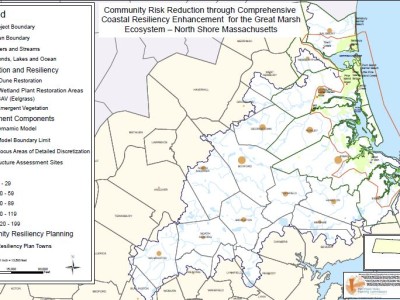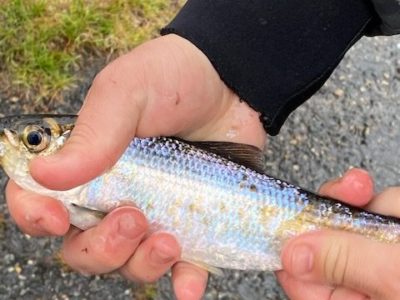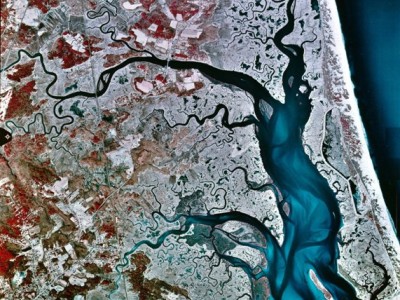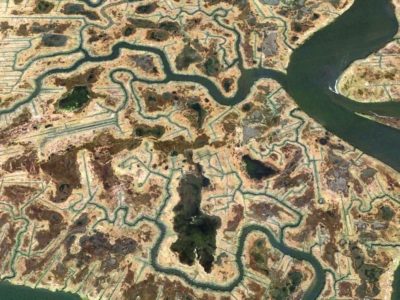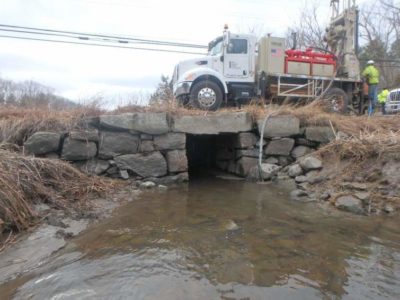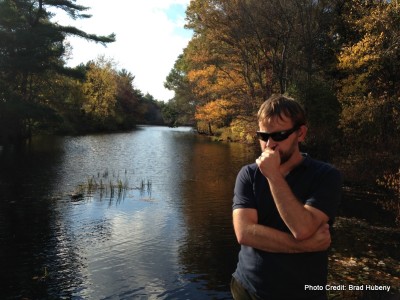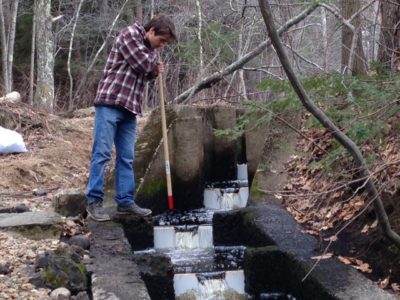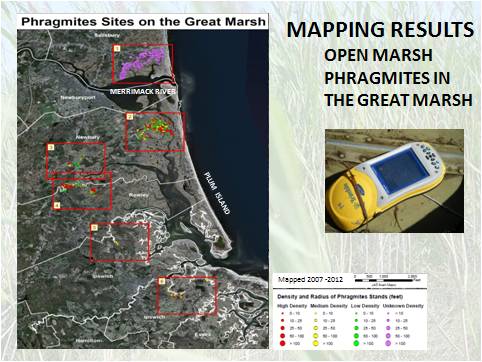
Status
2005 – Present
Toolkit and Actions
Monitoring and Technical Support
Land Protection and Management
Habitat Restoration
Lead Organization: Eight Towns and the Great Marsh
Project Contact: Peter Phippen (8T&GM)
About the Project
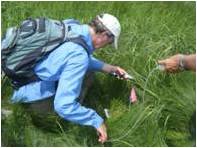
The Great Marsh Revitalization Task Force, chaired by the state senator representing the Great Marsh communities, is dedicated to the management and control of invasive Phragmites australis in the Great Marsh salt marsh. The Task Force, comprised of federal, state, municipal, not-for-profit, and private business stakeholders, has been working together for several years on long-term and short-term goals to manage thePhragmites. Short-term goals include curbing the spread of Phragmites (chemical treatment) while long-term solutions (hydrodynamic modeling, salinity influx, restriction removal, etc.) can be developed and implemented.
Chronology and Successes
- 2005 – Preliminary Study of Predicted Cause for PhragmitesSpread in the Great Marsh
- 2005 – Initial Mapping of Emergent and Established PhragmitesStands in the Upper Great Marsh
- 2006 – Pore Water Salinity Transects for Determination of Salinity Regime for Native Vegetation and Phragmites Stands
- 2007 – Pilot Control Study for Burning, Backpack Spraying, and Cut and Drip Applications
- 2008-2012 – Extensive Chemical Treatments of Phragmites
- 2009 – LiDAR Elevation Correlation Assessment of Phragmites locations
- 2010 – Infrared and Visible Light Pilot Project for Using Pictometry Imagery for Phragmites Mapping; Causes and Vectors for Phragmites Proliferation
- 2011 Expansion of Phragmites Mapping and Treatment into the Salisbury Portion of the Great Marsh; Post-spray Phragmites Mowing by Northeast Mosquito Control and Wetlands Management District
- 2012 – Phragmites Mapping – Gloucester to Salisbury, all marshes; 60 Acres Treatment of Phragmites
- 2013 – Initial development of a Hydrodynamic model of the Merrimack River and Plum Island Sound; Funding for an additional 30 acres Phragmites treatment

